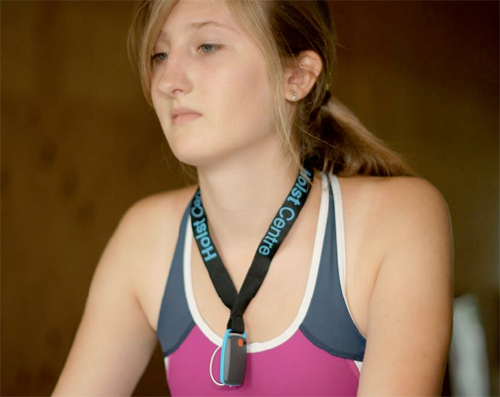You know that scene in Bladerunner where Harrison Ford uses a computer to zoom, refocus and travel in 3D space within a photograph? For years we’ve all thought that would be forever impossible, but new technology from Lytro suggests that this sort of thing may soon be possible.
Their forthcoming light field camera captures not just one perspective of a scene, but uses a lenticular array to capture the entire light field, meaning that the 3D space from which the light originated can be explored after the photo is taken – so you can change which part of the scene is in focus, generate 3D images or even peek “behind” foreground objects.
The Silicon Valley startup clearly faces technical and financial challenges to change their prototypes into an affordable consumer product – but the cat is out of the bag on the idea, and we can expect camera manufacturers to race to catch up and enter this brand new market. This is a disruptive technology with huge potential to change the way we think about photography. Soon we may have a completely new kind of camera, which can truly capture a moment in a way we never thought possible. Some are wondering if it will take the skill out of photography, while others are already speculating about what this might do to re-ignite 3D film-making.
Read more details at AllThingsDigital and try refocussing images for yourself in Lytro’s Picture Gallery.









 @
@ Tags:
Tags: 

 Richard Rushfield has spent the last few years writing the memoirs of his college years in the mid-1980s. As it happens, just as he needed to find more material to expand on the fragments he remembered, Facebook exploded, and suddenly his past was alive again, all those people he remembered could be consulted and could contribute to the memoir. But soon, the book and the discussions of it on Facebook re-ignited old feuds and the past he was trying to memorialize was alive and kicking again.
Richard Rushfield has spent the last few years writing the memoirs of his college years in the mid-1980s. As it happens, just as he needed to find more material to expand on the fragments he remembered, Facebook exploded, and suddenly his past was alive again, all those people he remembered could be consulted and could contribute to the memoir. But soon, the book and the discussions of it on Facebook re-ignited old feuds and the past he was trying to memorialize was alive and kicking again.
 39 years after it began, Internet-based electronic mail has finally been granted the same recognition as other forms of communication, meaning that it cannot be intercepted by authorities without a warrant. It’s nice to see some privacy rights being given back in a time when much of our privacy is being eroded in the name of fighting terrorism. The interesting question now is whether this will affect
39 years after it began, Internet-based electronic mail has finally been granted the same recognition as other forms of communication, meaning that it cannot be intercepted by authorities without a warrant. It’s nice to see some privacy rights being given back in a time when much of our privacy is being eroded in the name of fighting terrorism. The interesting question now is whether this will affect 




 Like all images on the site, the topic icons are based on images used under Creative Commons or in the public domain. Originals can be found from the following links. Thanks to
Like all images on the site, the topic icons are based on images used under Creative Commons or in the public domain. Originals can be found from the following links. Thanks to